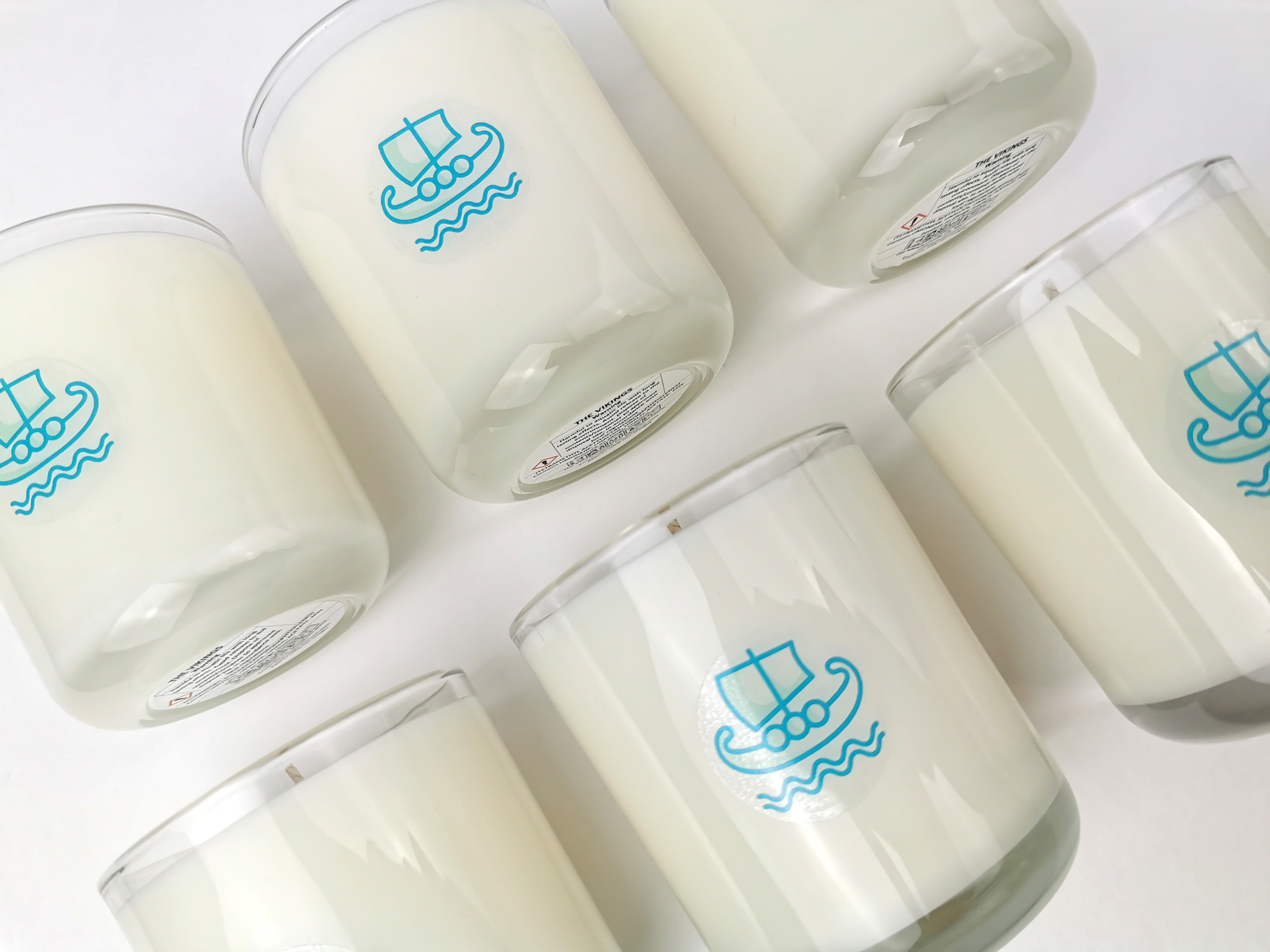
04 May Coconut Wax Candle Top 10 Benefits: Eco-friendly Perfection
If you’re nuts about candles, it’s time to shed some light on the incredible benefits of coconut wax. As eco-friendly and sustainable options become increasingly popular in the candle-making world, coconut wax has emerged as a frontrunner. In this article, we’ll dive into what makes coconut wax a superior choice for candle enthusiasts and manufacturers alike.
But first, let’s take a moment to enjoy this little pun: Why did the coconut wax candle go to therapy? Because it needed a scent-sitive ear! Now that we’ve brightened your day, let’s explore the fascinating world of coconut wax candles.
Table of Contents
ToggleAll About Coconut Wax Candles
Coconut wax candles are a luxurious and eco-friendly alternative to traditional candles made from paraffin or even soy wax. Derived from the raw material of coconut oil, these candles boast a plethora of benefits, making them a popular choice for consumers seeking a sustainable and high-quality option.
Coconut wax candles have a smooth and creamy appearance, and they burn cleaner than most other waxes. With a reputation for providing a strong scent throw and a longer burn time, it’s no wonder that candle lovers are going coco-nuts for this wax option. In the following sections, we’ll delve into the various aspects of coconut wax, its advantages, and how it compares to other types of waxes on the market.
What is a Coconut Wax Candle?
Coconut wax is a natural, plant-based wax derived from the process of hydrogenating coconut oil. This process transforms the oil into a solid, creamy, and versatile wax that can be used for various applications, including candle-making.
Coconut wax is gaining popularity among eco-conscious consumers and candle makers alike because it is a renewable resource, and its production has a lower environmental impact than some other waxes. Furthermore, it offers several advantages over traditional waxes, such as a cleaner burn, longer burn time, and excellent scent throw. As we continue through this article, we’ll discover more about what makes coconut wax an exceptional choice for candle making.
Is Soy Wax a Good Eco-friendly Alternative to Paraffin Wax?
Yes, soy wax is a good eco-friendly alternative to paraffin wax. Soy wax is plant-based and derived from soybean oil, making it a renewable resource. It also burns cleaner and longer than paraffin wax, which is petroleum-based.
However, soy wax has some downsides. It can be genetically modified and may contribute to deforestation due to the expansion of soybean cultivation. In comparison, we will dive into this a little further on. Coconut wax provides similar eco-friendly benefits without these drawbacks, making it an even better choice for those seeking a sustainable and environmentally friendly wax option.
10 Benefits of Coconut Wax for Candle Making
1. Amazing Scent Throw
Coconut wax boasts a superior scent throw, ensuring that the fragrance of your candles fills the room.
2. Slow and Even Burn
Coconut wax candles burn slowly and evenly, providing a long-lasting and enjoyable candle experience.
3. Sustainable and Extracted Through a Natural Process
Coconut wax comes from a renewable resource – coconut oil. Its production has a lower environmental impact, contributing to its sustainability.
4. Coconut Candle Wax is a Non-GMO Product
Unlike soy wax, coconut wax is not genetically modified, making it a more natural option for eco-conscious consumers.
5. Smokeless and Soot-Free
Coconut wax candles burn cleanly, producing little to no smoke or soot, ensuring a healthier indoor environment.
6. Incredible Aesthetics on a Coconut Wax Candle
The creamy and smooth texture of coconut wax lends a luxurious appearance to candles, enhancing their visual appeal.
7. No Deforestation Associated with Coconut Wax
Coconut wax production doesn’t contribute to deforestation, unlike some other waxes, making it an environmentally responsible choice.
8. Easy to Use
Coconut wax is user-friendly, making it simple for both amateur and professional candle makers to work with.
9. Excellent Adhesion
Coconut wax adheres well to glass and other surfaces, ensuring a clean and polished look for your candles.
10. Blends Well with Other Waxes
Coconut wax easily blends with other waxes, like soy or beeswax, offering the opportunity to create unique wax blends and enhance the qualities of your candles.
Coconut Wax Vs. Other Types of Wax
In this section, we will compare coconut wax with other popular types of waxes, highlighting their differences and advantages.
1. Soy Wax
Firstly, soy wax is a plant-based wax derived from soybean oil. It is an eco-friendly alternative to paraffin wax and is known for its slow burn and clean properties. However, unlike coconut wax, soy wax can be genetically modified and may contribute to deforestation due to the expansion of soybean cultivation.
2. Paraffin Wax
Secondly, paraffin wax is a petroleum-based wax and the most commonly used wax in the candle industry. Although it is affordable and offers an excellent scent throw, paraffin wax is not environmentally friendly and produces soot and harmful chemicals when burned. In contrast, coconut wax is a cleaner and more sustainable option.
3. Palm Wax
Next, palm wax is a natural wax derived from palm oil. It shares some benefits with coconut wax, such as a strong scent throw and even burn. However, the production of palm wax can be linked to deforestation and habitat destruction if not sustainably sourced. Coconut wax, on the other hand, does not have the same environmental concerns.
4. Beeswax
Lastly, beeswax is a natural wax produced by honeybees. It is a popular choice for eco-conscious consumers due to its clean burn and long-lasting properties. However, beeswax has a higher price point and does not offer the same scent throw as coconut wax. Additionally, some vegans may avoid using beeswax since it is an animal-derived product.
In conclusion, while each type of wax has its advantages, coconut wax stands out as an eco-friendly, sustainable, and versatile option that offers an excellent scent throw, clean burn, and luxurious appearance.
Transforming your living space into a sanctuary of sustainability and well-being begins with the enticing world of eco-friendly candles. As we embrace a greener lifestyle, the choice of fragrances for your home becomes more than just a pleasant aroma—it becomes a conscious decision to prioritize the environment. From naturally derived essential oils to plant-based waxes, this Redfin article, which we were featured in, will explore how eco-friendly scents not only elevate the ambience of your home but also contribute to a better planet.
Check out Scenting Sustainability: Eco-Friendly Scents for Your Home for tips on selecting eco-friendly scents and 15 scents that are sure to delight.
Exploring Wax Blends
Wax blending is the art of combining different types of waxes to create unique candles with distinct characteristics. By blending waxes, candle makers can achieve the best properties of each type of wax while overcoming the limitations of individual waxes. Let’s explore some popular wax blends and their benefits:
Coconut and Soy Wax Blend
A blend of coconut and soy wax combines the excellent scent throw of coconut wax with the affordability and popularity of soy wax. This blend offers a slow and even burn, making it an ideal choice for candles with strong fragrances. The blend we currently use in our candles.
Coconut and Beeswax Blend
By blending coconut wax with beeswax, candlemakers can create candles with a luxurious texture and a more natural, honey-like scent. This blend also benefits from the clean-burning properties of both waxes, resulting in a healthier indoor environment.
Coconut and Palm Wax Blend
Combining coconut and palm wax creates a blend that offers the benefits of both waxes, such as an even burn and strong scent throw. However, it’s essential to ensure that the palm wax used in the blend is sustainably sourced to avoid contributing to deforestation.
Coconut, Soy, and Beeswax Blend
A blend of coconut, soy, and beeswax offers the best of all three waxes. This combination provides excellent scent throw, slow and even burn, and a luxurious appearance. It’s a versatile choice for candle makers looking to experiment with various fragrances and candle styles.
By exploring different wax blends, candle makers can create unique products tailored to their preferences and specific requirements. Blending waxes allows for the combination of the best qualities of each wax, resulting in candles that stand out from the competition.
Coconut Wax Candle Benefits Conclusion
As we’ve read throughout this article, coconut wax is a shining star in the world of candle making. Its sustainable and eco-friendly nature, combined with its impressive scent throw and clean burn, make it a truly unbeatable choice for candle enthusiasts and makers alike.
With the multitude of benefits coconut wax offers, it’s no surprise that it has sparked a flame of interest among those seeking a high-quality and environmentally responsible option. In comparison to other waxes, coconut wax is truly the cream of the crop.
So, let’s end on a lighter note: Why did the coconut wax candle join a dating app? Because it was seeking the perfect match! With that, we hope you’ll consider a coconut wax candle from us, or for your next candle-making adventure and enjoy the many benefits it has to offer.








No Comments